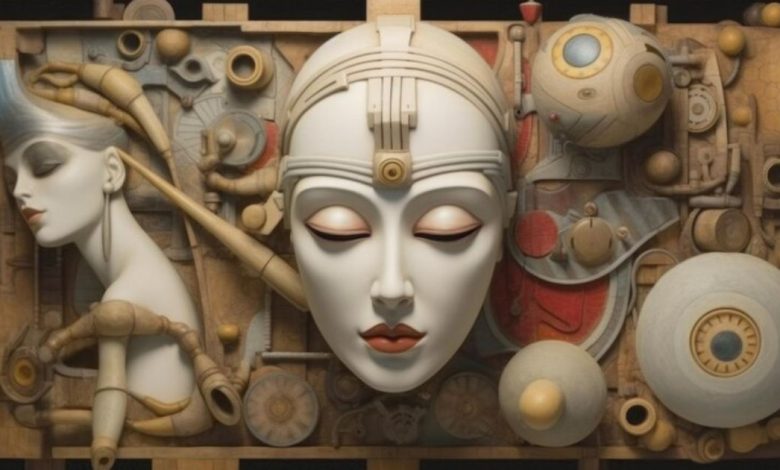Ancient Artz: Uncovering the Beauty and Significance

ancient artz is one of humanity’s earliest forms of expression, bridging time to reveal the thoughts, beliefs, and aesthetics of long-lost civilizations. From the cave paintings of prehistoric hunters to the majestic sculptures of ancient empires, ancient art provides a vivid lens into early human life. In this article, we will explore the different styles, purposes, and enduring significance of ancient art across various cultures, delving into the techniques and meanings behind some of history’s most awe-inspiring works.
What Defines Ancient Art
Ancient art includes any artwork produced in pre-modern times, primarily created before the fall of the Roman Empire in the West in 476 AD. It spans various cultures and civilizations, including the Egyptian, Greek, Roman, Mesopotamian, and Pre-Columbian civilizations. Each culture’s art style reflects unique characteristics shaped by its environment, beliefs, and societal needs.
The Origins of Art: Prehistoric Art
The oldest known artworks date back to the prehistoric period, which covers the Paleolithic, Mesolithic, and Neolithic eras. These early works include cave paintings, petroglyphs (rock engravings), and small sculptures.
The famous cave paintings in Lascaux, France, depict wild animals painted with natural pigments and are thought to have been created as part of hunting rituals. These early forms of art reveal how ancient humans connected with nature and the world around them.
The Mesopotamian Legacy
Ancient Mesopotamia, known as the “Cradle of Civilization,” gave birth to the first cities and empires. Mesopotamian art primarily served religious and political purposes, often featuring detailed reliefs and statues of gods, rulers, and mythical creatures. The Stele of Hammurabi, a large stone slab engraved with the laws of Babylonian King Hammurabi, exemplifies the blend of artistry and social order that Mesopotamian art embodied.
The Splendor of Ancient Egyptian Art
Ancient Egyptian art is iconic for its monumental statues, detailed hieroglyphics, and elaborate tomb paintings. Egyptian art primarily focused on themes of life, death, and the afterlife. Pharaohs were frequently depicted in grand, lifelike sculptures, symbolizing their power and divine status.
The Great Sphinx of Giza and the tomb paintings in the Valley of the Kings highlight how Egyptian artists used a stylized, symbolic approach to honor their gods and rulers. These artworks also show the Egyptians’ deep connection to their religious beliefs, as each piece was crafted with purpose and precision.
Greek Art and the Pursuit of Idealism
Greek art marked a significant departure from earlier rigid, symbolic forms. Greek artists emphasized naturalism and idealized forms, especially in the depiction of the human body. Greek art can be categorized into several periods: Archaic, Classical, and Hellenistic.
In the Classical period, artists like Phidias and Polykleitos created sculptures like the Discobolus (Discus Thrower), which celebrated athleticism and human beauty. Greek art was heavily influenced by the quest for balance, harmony, and proportion, principles that remain influential in Western art to this day.
Roman Art: Realism and Power
The Romans adopted many aspects of Greek art, adding their own emphasis on realism and portraiture. Roman art often highlighted the power and status of emperors and leaders. Statues of emperors, such as Augustus of Prima Porta, show a more lifelike and less idealized form, representing individuals as they were.
Roman art also included public works like mosaics and large-scale architecture, including the Colosseum and Pantheon. These constructions highlighted not only artistic skill but also the architectural advancements that made Roman engineering legendary.
The Artistic Diversity of the Indus Valley Civilization
The Indus Valley Civilization, located in what is now Pakistan and northwest India, left a fascinating legacy in art and architecture. The sculpture of the “Dancing Girl”, a small bronze statue, captures the civilization’s artistry in metalwork and their appreciation for the human form. Indus Valley artifacts include intricate pottery, seals, and jewelry, which reveal their proficiency in craft and trade.
Chinese Ancient Art: Harmony with Nature
Ancient Chinese art is characterized by its focus on harmony with nature and the cosmos. This can be seen in paintings, jade carvings, and bronze artifacts from the Shang and Zhou dynasties. Chinese calligraphy, which developed as an art form, and landscape painting emphasize simplicity and balance, rooted in Taoist philosophy.
The Rich Symbolism in Ancient Indian Art
Ancient Indian art draws heavily from religious themes, particularly Buddhism and Hinduism. Temples, sculptures, and paintings often depict gods, goddesses, and mythological scenes. The Great Stupa at Sanchi and the intricate carvings of Ellora and Ajanta caves represent spiritual themes and cultural beliefs that resonate deeply with followers to this day.
The Sacred Art of the Americas: Maya, Aztec, and Inca
Ancient American civilizations like the Maya, Aztec, and Inca created art that reflected their religious beliefs, particularly their reverence for the natural world. Maya stelae and murals tell the stories of rulers and gods, while Inca textiles and pottery show their deep connection to land and tradition.
Aztec art, such as the Sun Stone (often called the Aztec Calendar), is full of complex symbolism and depictions of deities, highlighting their cosmological beliefs and sophisticated craftsmanship.
African Art: A Blend of Form and Function
African ancient art is often associated with spiritual and ritual purposes. The art from ancient African societies like Egypt, Nok, and Ife served both functional and religious purposes. Ife sculptures in Nigeria, known for their naturalistic bronze and terracotta figures, reflect the spiritual and social beliefs of these cultures. Art was closely tied to storytelling, ritual, and community identity.
Australian Aboriginal Art: Dreamtime and the Land
Ancient Aboriginal art in Australia, often made from natural pigments on rocks, reflects a deep connection to the land and Dreamtime—a spiritual belief system encompassing creation myths and ancestors. Aboriginal artworks, like the Wandjina rock art, serve as a means of preserving and passing down cultural stories across generations.
Techniques and Materials in Ancient Art
Ancient artists used various materials, including stone, wood, metal, clay, and natural pigments. Techniques ranged from carving and painting to metal casting and pottery. Each material required specialized skills, and the choice of medium often reflected the resources available in each region.
For example, Egyptian artists favored limestone and granite for monumental sculptures, while Greek artists advanced the technique of bronze casting for their statues. The use of natural materials not only enhanced the art’s longevity but also connected each piece to its environment.
The Influence of Religion and Mythology
Religion and mythology were major influences on ancient art, guiding the themes and symbols used. Whether it was the Egyptian gods, Greek myths, or Chinese Taoist philosophies, spiritual beliefs shaped the artworks’ purpose and design. Artists were often inspired to depict deities, celestial beings, and cosmic events to honor the sacred, communicate with the divine, or tell stories of creation.
Why Ancient Art Matters Today
Ancient art holds timeless value, reminding us of humanity’s shared heritage and evolution. It offers insights into the lives, beliefs, and values of early civilizations, fostering a connection between the past and the present. Ancient art is more than decorative; it is an educational tool, helping us understand the diversity and complexity of human history.
Conclusion
Ancient art reflects the creativity, spirituality, and skill of early civilizations. From the symbolic cave paintings of prehistoric hunters to the majestic sculptures of emperors, ancient art provides a vibrant historical record. Each piece holds cultural significance and artistic innovation, reminding us of humanity’s enduring quest for beauty and meaning.
FAQs
What is the oldest form of ancient artz?
The oldest known artworks are prehistoric cave paintings, petroglyphs, and small sculptures, dating back to the Paleolithic period.
How did religion influence ancient artz?
Religion was a key influence, inspiring depictions of gods, rituals, and mythological themes across many ancient cultures.
What materials were commonly used in ancient artz?
Materials included stone, wood, metal, clay, and natural pigments, each chosen based on the resources available.
How does ancient artz differ across cultures?
Ancient art styles vary widely, reflecting each culture’s beliefs, environment, and societal structure.
Why is ancient artz important today?
Ancient art provides insights into human history, cultural diversity, and early artistic innovation, connecting us to our past.
